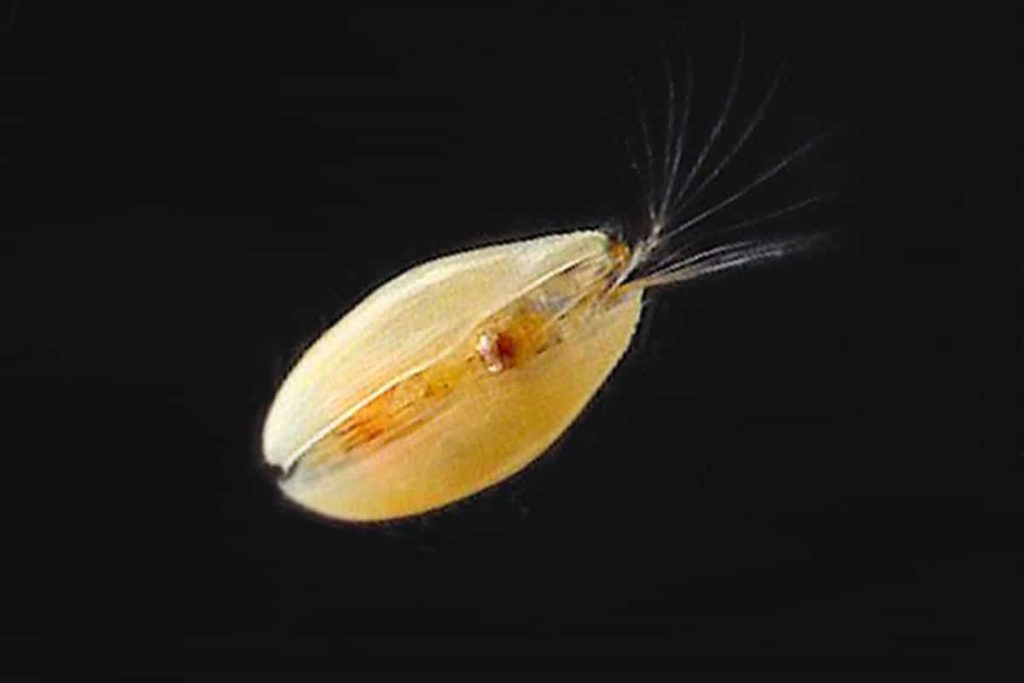Sometimes, work and home come together in ways you don’t expect. I decided to get into aquascaping this summer, growing underwater plants and keeping nutrient cycles alive and self-sustaining between the soil, the plants, and small invertebrates. In my research, I was surprised to come across a little creature I worked with earlier in 2022 – the humble ostracod.
Ostracods, or class Ostracoda, are small crustaceans, commonly known as seed shrimp in english, or mussel shrimp in norwegian. This is because of their small, round bodies, and bivalve-like carapace.

For a class that isn’t often talked about in the everyday, they are near ubiquitous in aquatic environments, from freshwater, to the marine water column, living in the benthos over 9km¹ deep, and in the fossil record. Despite this, they are also relatively under-researched. Though, there is an increasing amount of molecular phylogeny research being conducted, which helps support evidence for their monophyletic status, despite previous ambiguity and exclusively morphological evidence².
Other roles of ostracods in research are as indicators of historic environments, such as indicators of kenoxic events³, temperature⁴, and more. Given their overwhelming prevalence and diversity both in the modern day, as well as historically in the fossil record, we can conclude that they are an exciting group, and fantastic candidates for further study, both in a modern and historical biodiversity context.
Sources:
- Brandão, S. N., Hoppema, M., Kamenev, G. M., Karanovic, I., Riehl, T., Tanaka, H., Vital, H., Yoo, H., & Brandt, A. (2019). Review of Ostracoda (Crustacea) living below the Carbonate Compensation Depth and the deepest record of a calcified ostracod. Progress in Oceanography, 178, 102144. https://doi.org/10.1016/j.pocean.2019.102144
- Oakley, T. H., Wolfe, J. M., Lindgren, A. R., & Zaharoff, A. K. (2013). Phylotranscriptomics to Bring the Understudied into the Fold: Monophyletic Ostracoda, Fossil Placement, and Pancrustacean Phylogeny. Molecular Biology and Evolution, 30(1), 215–233. https://doi.org/10.1093/molbev/mss216
- Whatley, R. C., Arias, C. F., & Comas-Rengifo, M. J. (1994). The use of Ostracoda to detect kenoxic events: A case history from the Spanish Toarcian. Geobios, 27, 733–741. https://doi.org/10.1016/S0016-6995(94)80235-1
- Horne, D. J. (2007). A Mutual Temperature Range method for Quaternary palaeoclimatic analysis using European nonmarine Ostracoda. Quaternary Science Reviews, 26(9), 1398–1415. https://doi.org/10.1016/j.quascirev.2007.03.006
![]()
